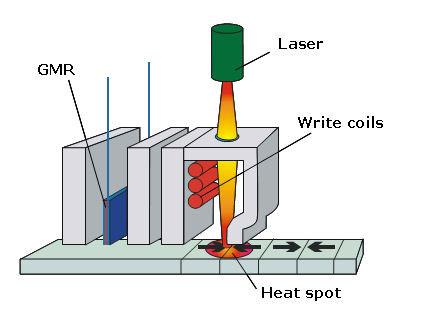That’s at least what is possible with Hitachi’s evolution of the perpendicular magnetic recording technology where they use a tiny, around 20nm, but powerful beam of light to heat the storage medium while a magnetic head writes the data bits.
The technology is called thermally-assisted recording and will be capable of a whopping 2.5 terabit per square inch. Five times the capacity of the densest harddrives of today.
In thermally-assisted recording, magnetic grains can be made smaller while still resisting thermal fluctuations at room temperature. As the name suggests, thermally-assisted recording uses a laser to heat up the media while the magnetic head is writing the smaller bits of data. This enables the use of media that is magnetically stable at room temperature with the very small magnetic grains required for high-density storage.
Alas there is no concrete information on when the technology will be commercially available, and even if it is expensive they will have to find a successor to perpendicular magnetic recording, which according to the same source will have a hard time reaching even 1 terabit per square inch.

Thermally-assisted recording heats the storage medium when writing data















